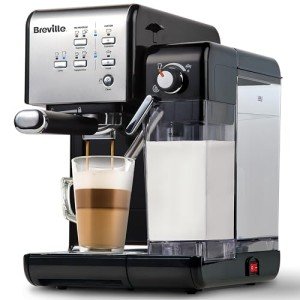What's Holding Back This Commercial Espresso Machines Industry?
The Rise of Home Espresso Machines: A Comprehensive Guide
As coffee lovers continue to look for fresh and flavorful brews in the house, the appeal of home espresso machines has risen recently. No longer simply the domain of cafes and cafe, these machines empower people to craft barista-quality espresso beverages from the convenience of their kitchens. This short article will check out the different types of home espresso machines, their functions, and considerations for picking the best one. Furthermore, it will supply a choice of FAQs to assist potential purchasers make notified decisions.
Types of Home Espresso Machines
Home espresso machines can be classified into several classifications based on their mechanisms and user-friendliness. Each type has its unique features, pros, and cons.
Type
Description
Pros
Cons
Manual Espresso Machines
Needs the user to manually control the brewing procedure, involving strategies like pulling a lever to develop pressure.
- Complete control over developing procedure
- Compact design
- Requires skill and practice
- Time-consuming
Semi-Automatic Machines
Machine automates water circulation and pressure, but the user still controls the dosing and duration of the developing procedure.
- Balance of automation and control
- Versatile
- Learning curve for refining strategies
Fully Automatic Machines
Automates the entire developing procedure, from grinding to brewing, typically with programmable settings for customized beverages.
- Extremely user-friendly
- Quick and practical
- Less control over the brewing procedure
- Higher price point
Pill or Pod Machines
Uses pre-packaged espresso capsules or pods to produce coffee rapidly and easily.
- Extremely easy to use
- Minimal cleanup
- Limited taste range
- More pricey per cup than ground coffee
Super-Automatic Machines
Combines features of fully automatic machines with integrated mills, permitting users to brew whole bean espresso and milk-based drinks with one touch.
- All-in-one convenience
- Ideal for milk-based drinks
- Often the most costly
- Can be large
Functions to Consider
When choosing a home espresso machine, potential purchasers ought to think about the following features to guarantee they choose a machine that fulfills their requirements:
Grinder Type:
- Built-in mills can offer fresher premises but might need more maintenance.
- Different grinders enable more personalization of grind size.
Pressure:
- Look for machines that produce a minimum of nine bars of pressure, which is optimum for brewing espresso.
Water Temperature Control:
- Machines with adjustable temperature settings enable much better extraction of flavor from beans.
Milk Frothing Options:
- Consider whether you want a manual steam wand for frothing or an automatic milk frother for convenience.
Ease of Cleaning:
- Machines with removable parts and self-cleaning functions significantly decrease cleanup time.
Size and Design:
- Ensure the machine fits conveniently in your kitchen area and aligns with your aesthetic choices.
Budget:
- Set a budget before beginning your search, as prices can range substantially from affordable designs to high-end machines.
Advantages of Home Espresso Machines
Owning a home espresso machine uses numerous benefits:
- Cost-Effective: Over time, brewing espresso in your home can save coffee lovers money compared to frequent coffee shop sees.
- Customization: Users can explore different beans, grind sizes, and brewing strategies to find their ideal cup.
- Convenience: The ability to brew espresso whenever removes the need to go out to a coffee shop, especially helpful throughout late nights or early mornings.
- Quality assurance: With a home machine, people have total control over the quality of active ingredients and developing procedures.
Disadvantages of Home Espresso Machines
Nevertheless, there are some downsides to think about:
- Initial Investment: High-quality espresso machines can be pricey, requiring a considerable in advance investment.
- Knowing Curve: Mastering the art of espresso brewing can take some time and practice, which might be frightening for beginners.
- Maintenance: Like any appliance, espresso machines require regular cleansing and maintenance to guarantee ideal performance.
Frequently asked questions
1. What is the very best type of home espresso machine for beginners?
Answer: For newbies, a semi-automatic machine is frequently advised as it uses a balance in between control and automation, permitting you to learn the fundamentals without overwhelming intricacy.
2. Just how much should I invest in a home espresso machine?
Answer: Entry-level machines can begin around ₤ 100 to ₤ 300, while higher-end designs can range from ₤ 500 to over ₤ 2000. It's important to set a budget based on your expected use and desired features.
3. Do I need a separate grinder?
Response: While some espresso machines include built-in mills, buying a separate grinder permits higher modification and guarantees better quality grounds.
4. How often should I clean my espresso machine?
Response: Cleaning frequency can differ by machine type, however it's typically recommended to clean the machine after each use and perform deep cleansings weekly or regular monthly, depending upon use.
5. Can I make milk-based drinks with any espresso machine?
Answer: Not all machines come with milk frothing abilities. If you take pleasure in beverages like lattes or cappuccinos, search for a machine with a steam wand or automatic frother.
Home espresso machines are transforming the way coffee aficionados enjoy their beloved brews. With different types and advanced functions offered in the market, there is something for everybody. Whether it's the pleasure of producing distinct dishes or simply appreciating the best shot of espresso, purchasing a home espresso machine can enhance both the coffee-drinking experience and the lifestyle for coffee lovers all over. Espresso Machine Deals to any financial investment, it is essential to weigh the benefits against the possible downsides and choose a machine that flawlessly fits both your way of life and choices.
